Section 2
WORK SURFACES
Choosing the correct work surface is an integral part of the overall workstation setup.
In choosing a work surface the following should be considered.
The work surface should:
• be solid enough to support all of the equipment and materials the user requires.
• provide adequate space to house and utilize all external equipment required.
• provide enough clearance beneath the work surface to allow the user to sit or stand directly in front of, or close to, the work surface in an upright posture without obstruction.
• allow the user to move freely through multiple postures while seated (including extending the lower legs), or to stand (CSA Z412-17).
• be high enough to allow the user to sit and/or stand with their feet comfortably supported on the floor while maintaining neutral postures for sitting and/or standing, and without exposing the user to contact stress.
It is also important to ensure storage cabinets and drawers (beneath or above) do not impede the movement of the user,
reduce leg space, create pinch points, or cause the user to work outside neutral posture.
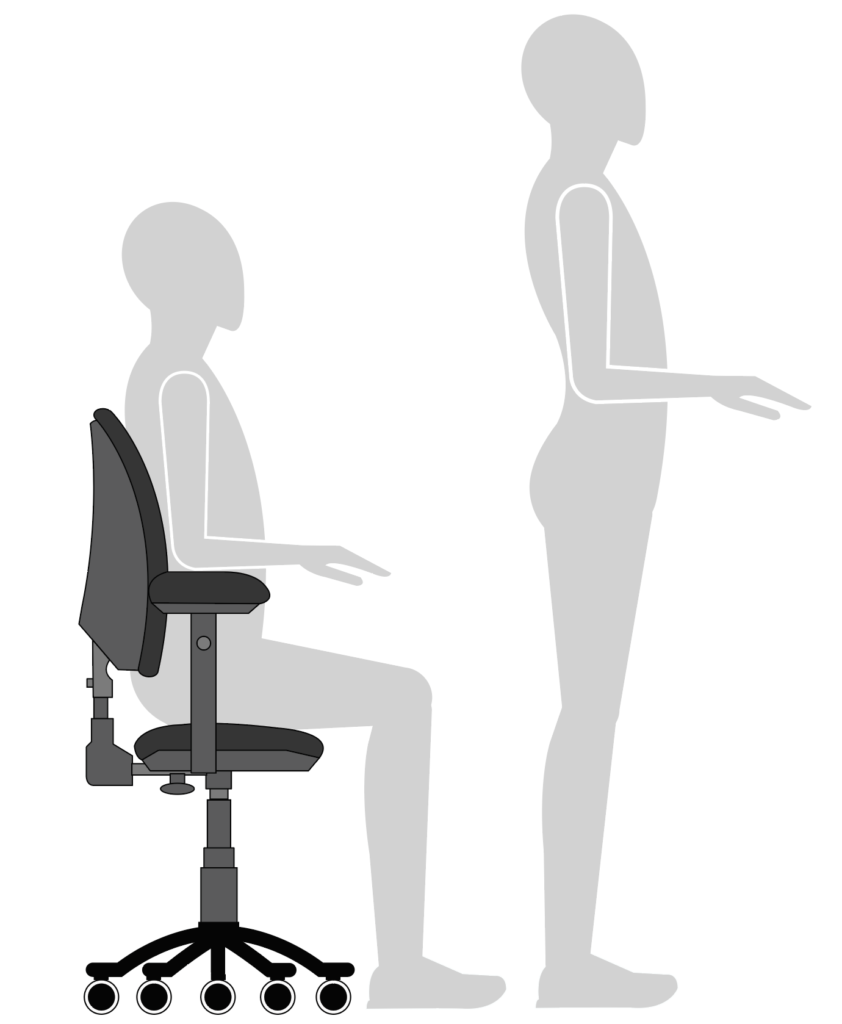
Neutral Postures (sitting and standing)
There are four common “shapes” of desks that are used in the office environment:
Straight • Corner • L-shaped • U-shaped
Straight
Merits:
• Good when the user performs only one task (computer or paperwork).
Limitations:
• Often there is insufficient space to house all the required computer components.
• Prevents or restricts the ability of an individual to perform multiple tasks.
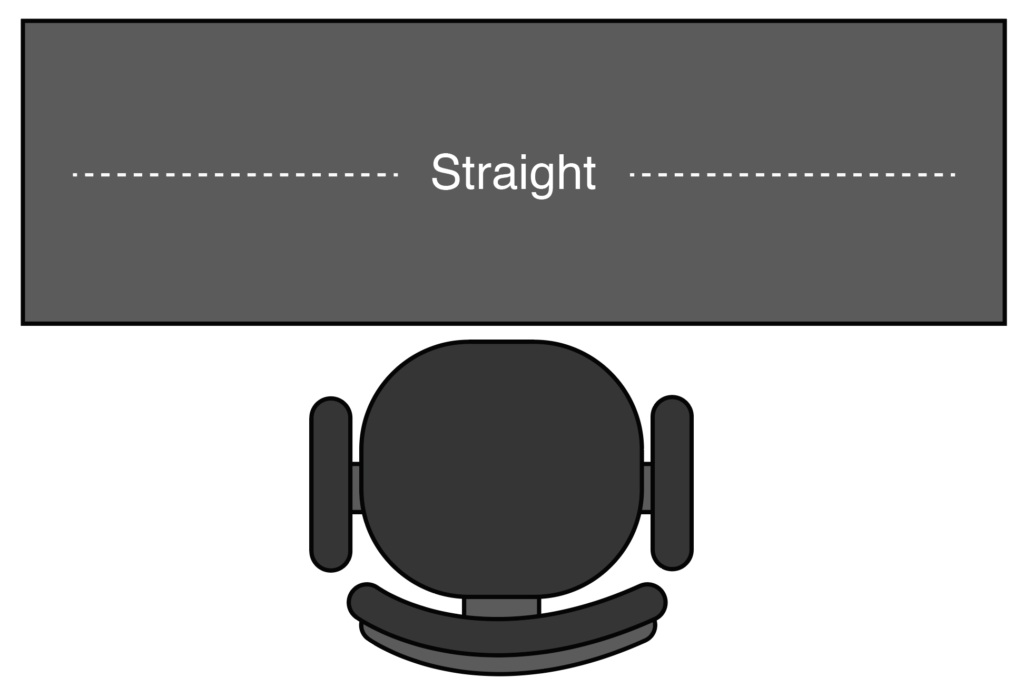
Corner
Merits:
• May allow workspace on either side of the computer.
Limitations:
• Paperwork area potentially limited by length of straight sides.
• Often curve is too small to position keyboard and mouse correctly to maintain neutral postures.
• Leg clearance is often limited by desk supports.
• Limited by available workspace and the size of office.
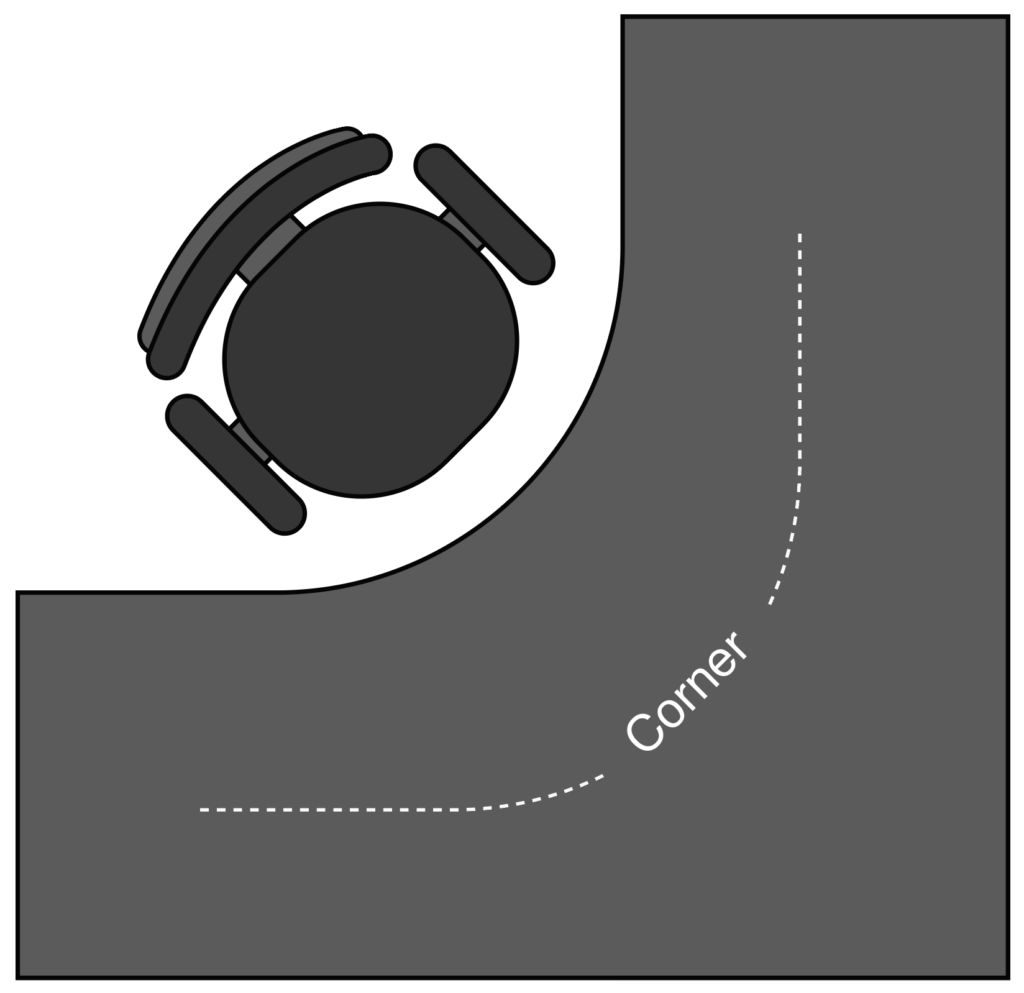
L-Shaped
Merits:
• Provides dedicated workspace on one side of the computer to perform paperwork or utilize as meeting space.
Limitations:
• Limited by available workspace and the size of office.
• Setup is dictated by the dominant hand (standard right hand configuration illustrated).
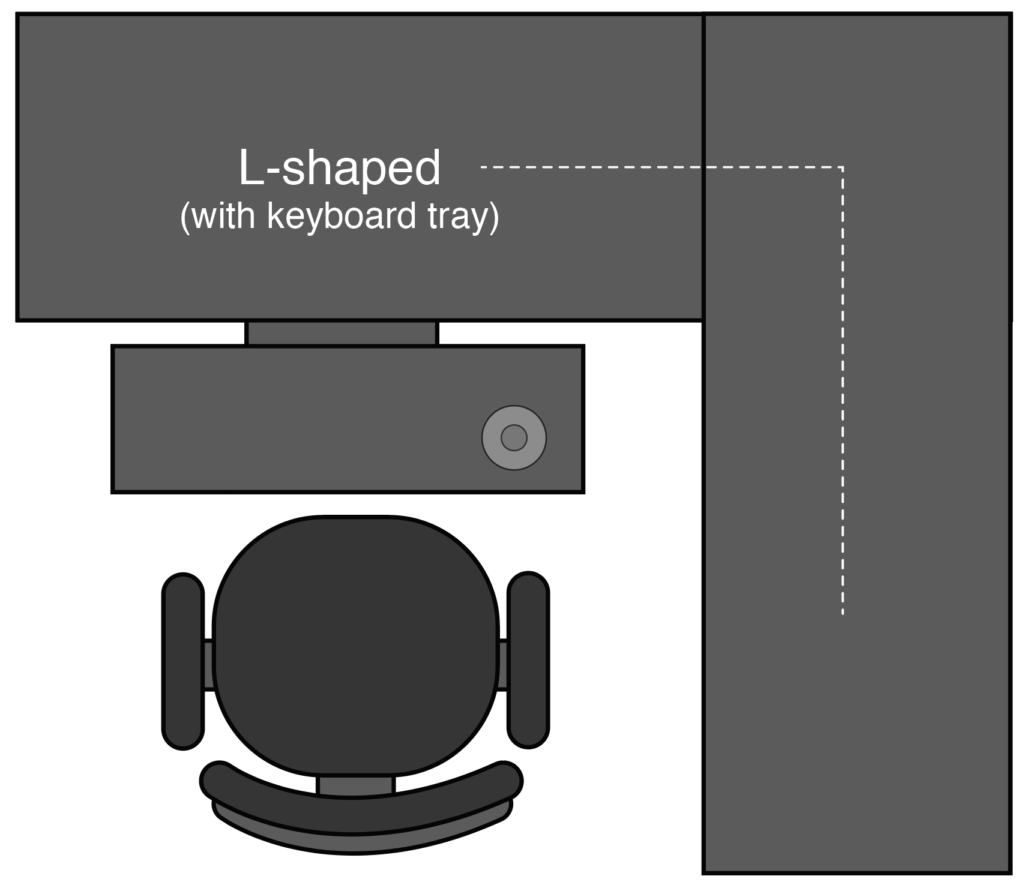
U-shaped
Merits:
• Provides dedicated workspace on each side of the computer to perform paperwork or utilize as meeting space.
Limitations
• Limited by available workspace and the size of office.
• Size of workstation may increase reach requirements.
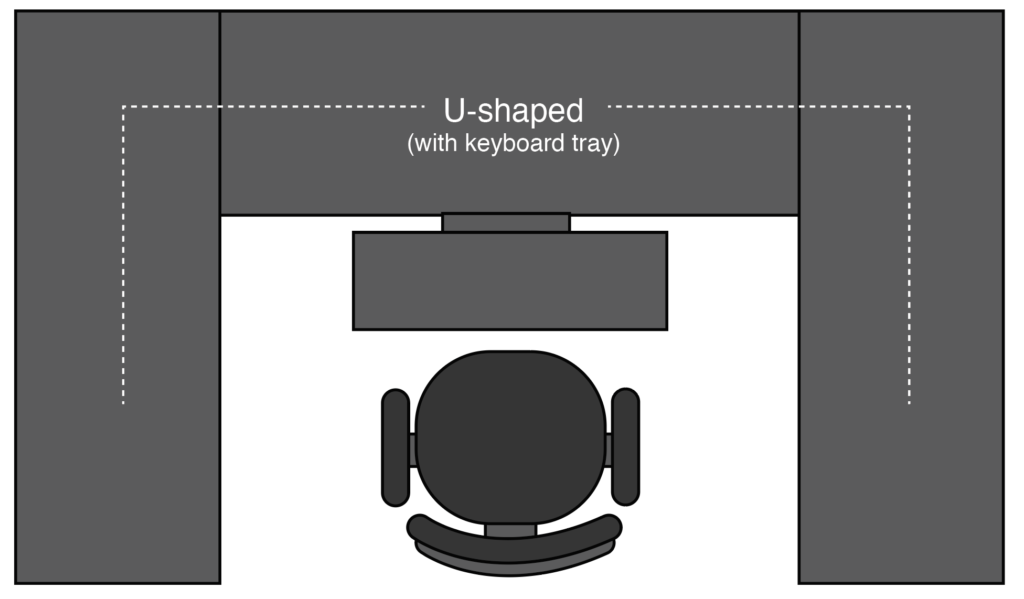
Desk configuration will be dictated by the available space and tasks the user is required to perform.
Regardless of the desk type, it is important to ensure that the equipment sitting upon it is positioned properly.
A workspace envelope is a measure of the maximum and normal ranges of the motion of the arm.
The workspace envelope is divided into three zones:
1. Primary Zone
Frequently used objects should be located within the primary zone, approximately elbow to fingertip away from the midline of the body. Such items would include the keyboard, mouse, and telephone (depending on usage).
2. Secondary Zone
Items that are used less frequently should be located in the secondary zone, approximately arm’s length away from the midline of the body. Such items would include the telephone (depending on usage), pens, stapler, etc.
3. Tertiary Zone
Items touched rarely may be located in the tertiary zone, greater than an arm’s length away from the midline of the body. Such items would include the monitor (due to viewing distance requirements) and infrequently used books/documents, etc.
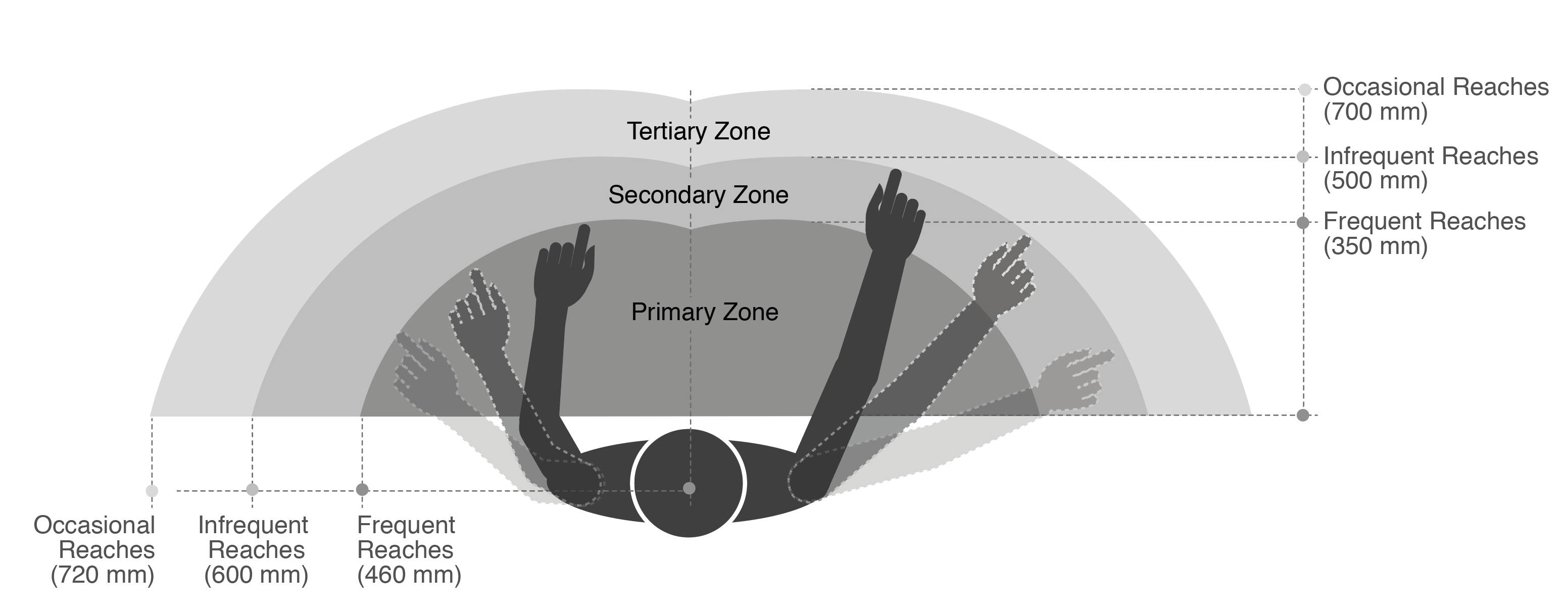
The Workspace Envelope
Filing cabinets/drawers under the workstation should not interfere with the user’s ability to properly adjust the keyboard tray or perform paperwork.
• Filing cabinets should be equipped with a locking system so that no more than one drawer can be opened at one time.
• File and desk drawers should be kept closed when not in use to avoid potential injury.
• Arrange cabinets so frequently used files are in the middle drawer (or closest to elbow level) to reduce bending or reaching.
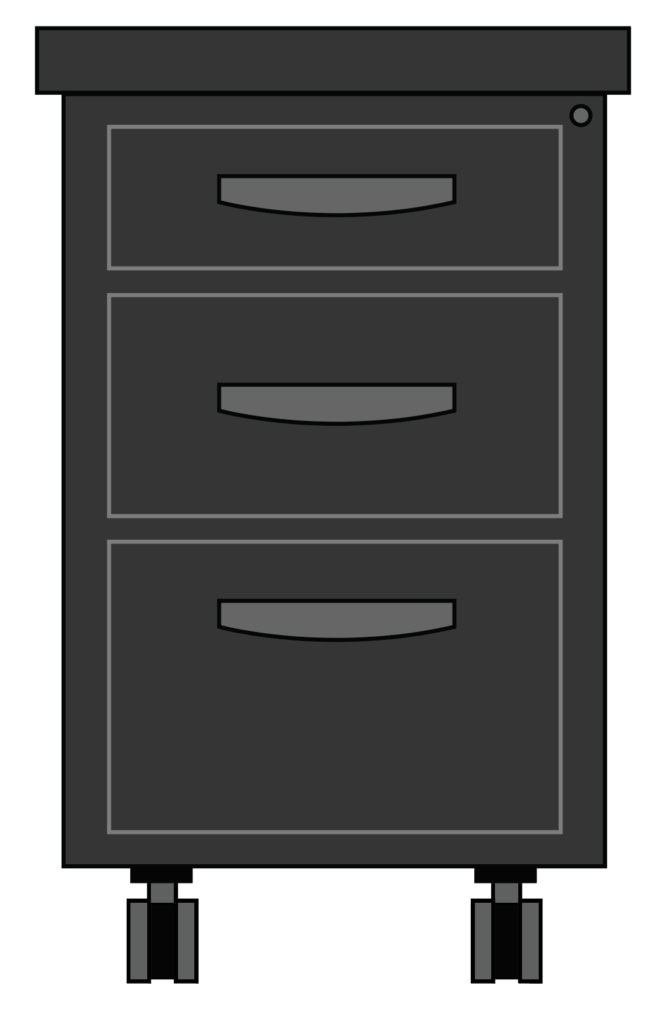
Additional Considerations
![]()
Allow adequate space for maintenance of equipment.
![]()
Equipment such as printers or fax machines should not obstruct movement and should be located in an alternate space other than the desk.
![]()
Cables and cords* should be long enough to accommodate the user’s needs and workstation mobility as required (e.g. sit/stand workstation).
*power cords, monitor cables, mouse and keyboard cords, etc.
Navigate to other sections of this Reference Guide using the links below:
